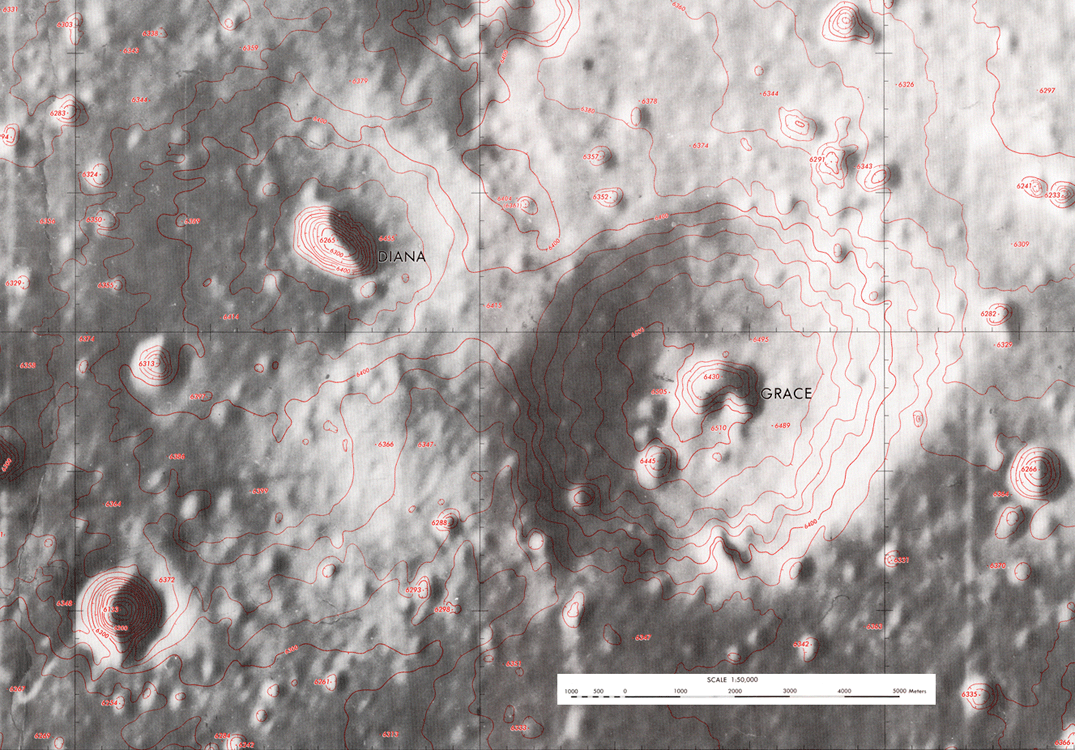
image from Lunar & Planetary Institute
Lunar domes are small (typically having diameters less than 10-15 km) and squat (often less than 200 m high) so they are difficult to study. The Geological Lunar Researches group (GLR) is doing an excellent job in developing observational methods to determine the heights and slopes of domes, but for a few domes there is even better data. The Lunar Topophotomaps (LT) are like the more familiar (but less pronounceable) Lunar Topographic Orthophotomosaics (LTO), but even larger scale. This piece of LT 61A2S1 (50) shows detailed topography for two domes just north of the Cauchy Rille in northern Mare Tranquillitatis. Vitruvius 1 (Grace) and Vitruvius 2 (Diana) are domes that seem to be seldom imaged; only the broad view by Paolo Lazzarotti shows them, just at the end of Mons Esam. Grace is a classic hemispheric dome with diameter of 7.5 km and height of 150 m. The irregular crater on top is about 150 m wide and 80 m deep. On its steeper west flank Grace has a slope of 4.6°, but it is only 3.5° on the east. Diana is a smaller and less well-defined dome, with a basal diameter of about 4.2 by 5.3 km. Its summit pit is 1.1 by 1.8 km and is 190 m deep. This is amazing because Diana is only about 75 m high - the pit extends more than 100 m below the base of the dome! This probably results from the base of the dome being covered by mare basalt and even lava from the small dome to its south. The average slope of Diana’s inner pit wall is 21° - you wouldn’t want to fall! Perhaps this LPOD should be titled, Amazing Diana!
Technical Details:
Sterographic derived topography maps made from Panoramic camera photographs from Apollo 15 to 17 data.
Related Links:
Rükl plate 36
Lunar Orbiter IV view
Yesterday's LPOD: An Experimental Online Map
Tomorrow's LPOD: Coincidence or Special Times?



